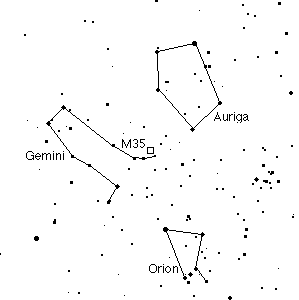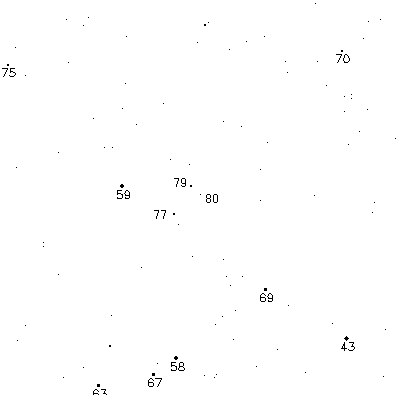How to Find It
Go north from the final two stars of the three that form Castor's foot. The cluster
lies to the west (right on the map) of the 6th magnitude star shown on the close-up map.
Comments
Philip Harrington, in Touring the Universe through Binoculars, refers to this
as "one of the premier open clusters of the northern winter sky," and states that it
"may even be seen with the unaided eye on crystal clear nights." Not!
A lovely sight through an 8-inch telescope,
this cluster strikes me as a distinctly unimpressive
subject for binoculars, even under dark-sky conditions. The most
prominent four members form a shape like a much-reduced Canis Major. Three of these are 8th
magnitude stars, while the most southern is an unresolved triplet of dimmer stars adding
up to about the same brightness. Don't bother trying to find this one from a light-polluted
location unless all the other factors are in your favor -- no moon, good weather, and M35
near the meridian.
Nearby Scenery
In the same region of the sky are M36, M37, and M38 in Auriga. None of these are particularly
easy to find or exceptionally pleasurable to look at through binoculars, although M36 at least
looks like something other than a random part of the star field, appearing like a
soft cloud of mist under
dark-sky conditions.
|
 |



